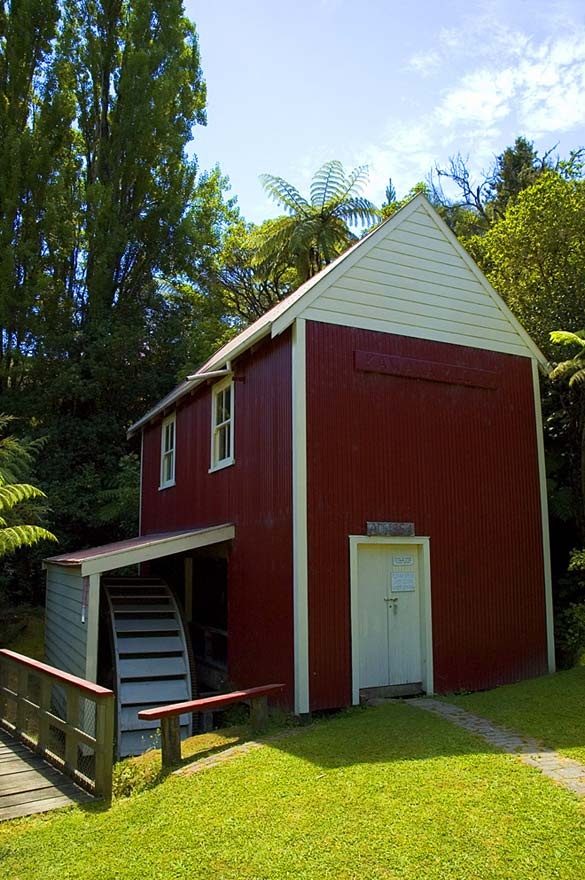
Kawana Flourmill and Waterwheel (1854)
Early Māori ‘think big’ project
Many Māori embraced the new opportunities offered by the international economy. They crewed whale ships, worked at whaling stations, grew crops, exported to Australia and also supplied much of early Auckland and Wellington’s meat and building materials. As well as paying 60% of the North Island’s customs duties by 1856, they also invested in major capital items such as trading schooners and flourmills. As investments, these were usually unproductive. Expensive to buy and maintain, and treated more as symbols of chiefly and tribal mana, the schooners swung at their moorings while waka brought home the bacon. Those that avoided shipwreck would soon succumb to competition from European shipping.
But some of the flourmills, which also had a political function as symbols of mana, were more successful, at least around Whanganui. This mill was originally named Kawana Kerei (Governor Grey) in honour of the governor, who donated millstones. Millwright Peter McWilliam built it in 1854 at Matahiwi for Ngā Poutama iwi to take advantage of salvageable totara logs lying in the riverbed. The provident Whanganui also provided transport for Grey’s millstones and the English cast-iron machinery and brass bearings, as well as power once the waterwheel started turning inside the timber-framed weatherboarded three-storey mill house. The government appointed Richard Pestall miller, and expected him to train Māori as part of his duties.
Pestall was succeeded by his son and the mill ground away spasmodically until 1913 when it was abandoned. Members of the Wanganui Tramping Club kept the site clear of weeds but restoration only began in the mid 1970s when the threat of outsiders removing the waterwheel prompted local people and the former Historic Places Trust to act. The wheel and millstones are authentic, as is the (relocated) miller’s cottage. The mill building is not, because the top storey had been dismantled in the 1930s for the iron and most of the original weatherboard structure had rotted away. Architect Chris Cochran designed this replica. Trust and tramping club volunteers supervised work on the mill, which another ‘kawana’, Governor-General Sir Keith Holyoake, opened in October 1980.
Further information
This site is item number 19 on the History of New Zealand in 100 Places list.
On the ground
The site features noticeboards and historic photographs.
Websites
- Heritage New Zealand List - Flourmill
- Heritage New Zealand List - Miller’s cottage
- Te Ara entry on agricultural processing industries
Books
- Paul Monin, This is my place, Bridget Williams Books, Wellington, 2001
- Hazel Petrie, Chiefs of industry: Maori tribal enterprise in early colonial New Zealand, Auckland University Press, Auckland, 2006


Community contributions